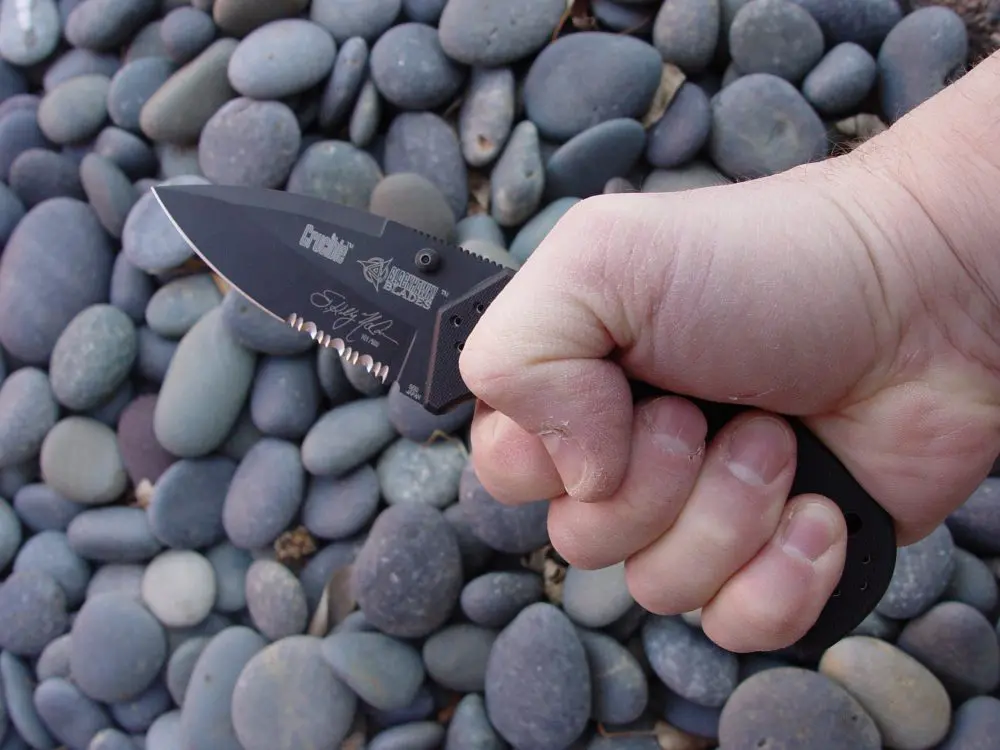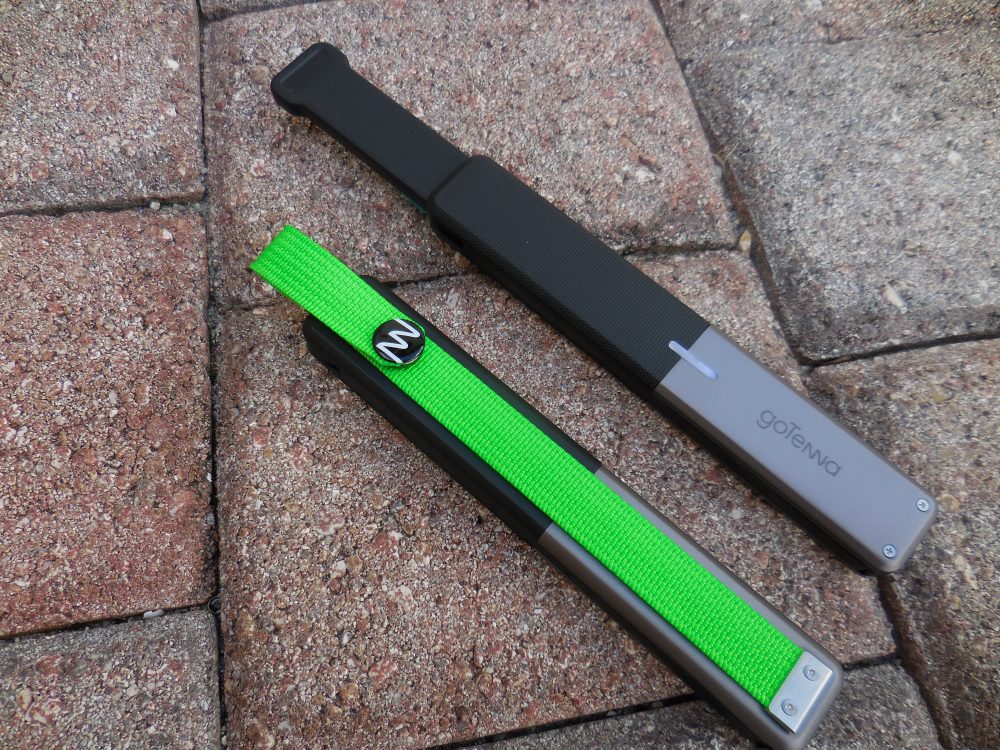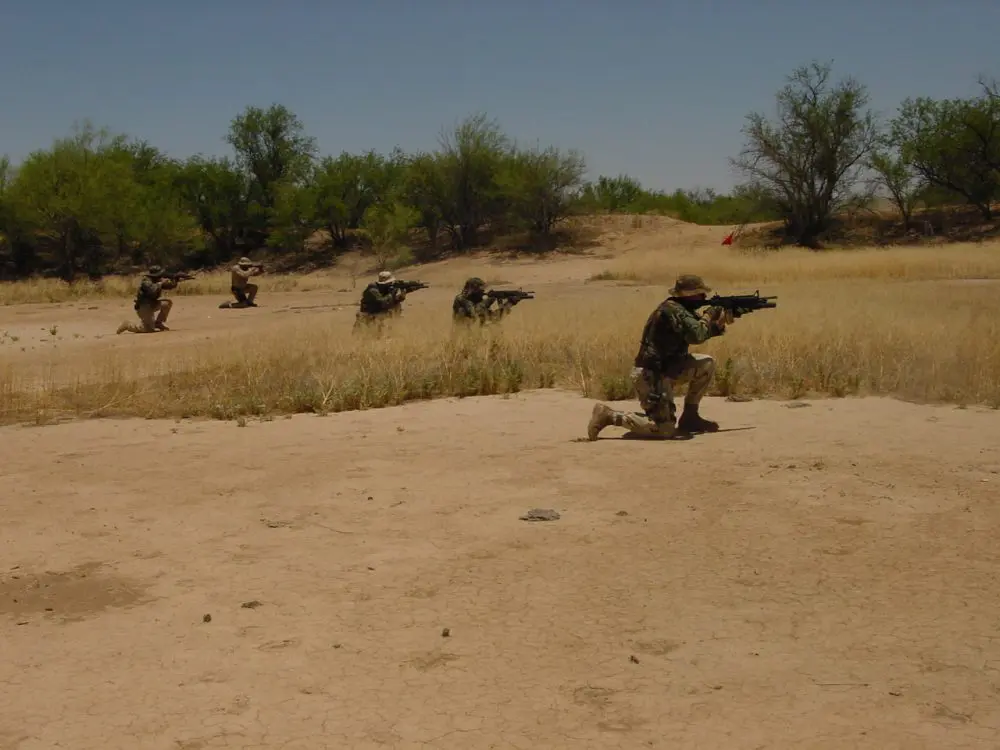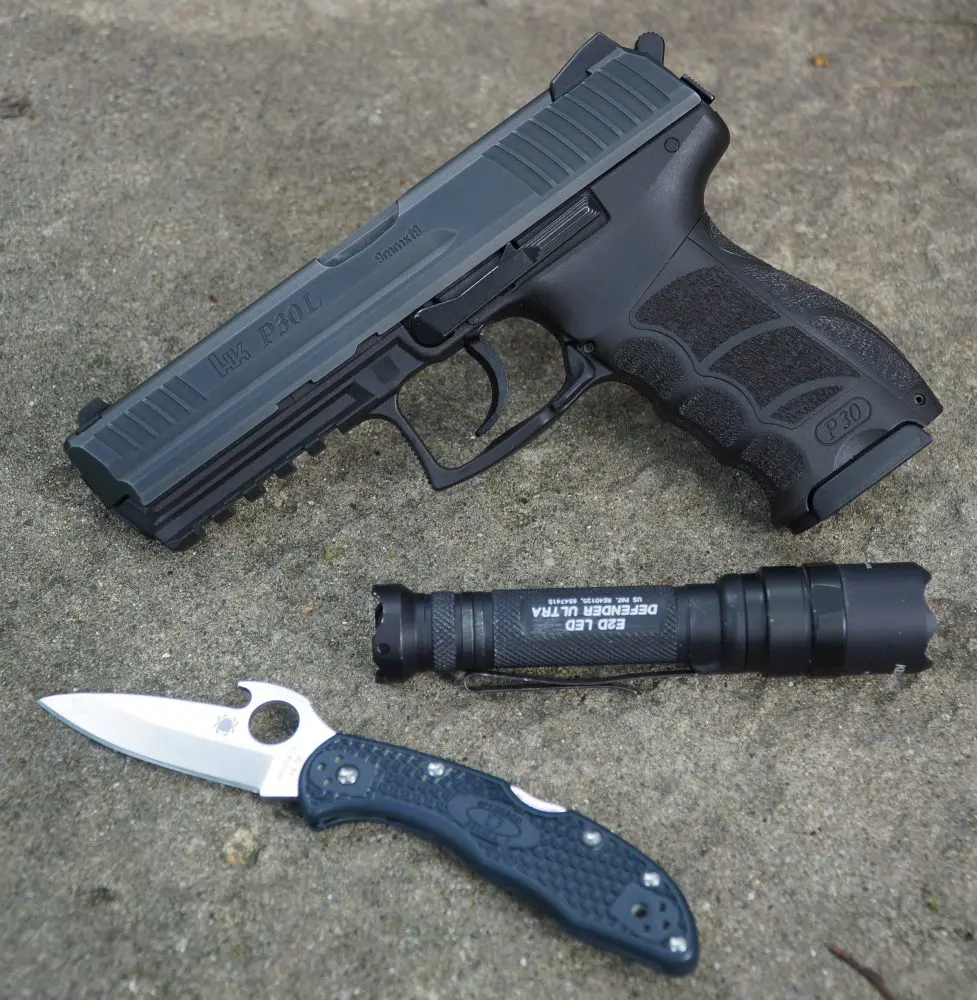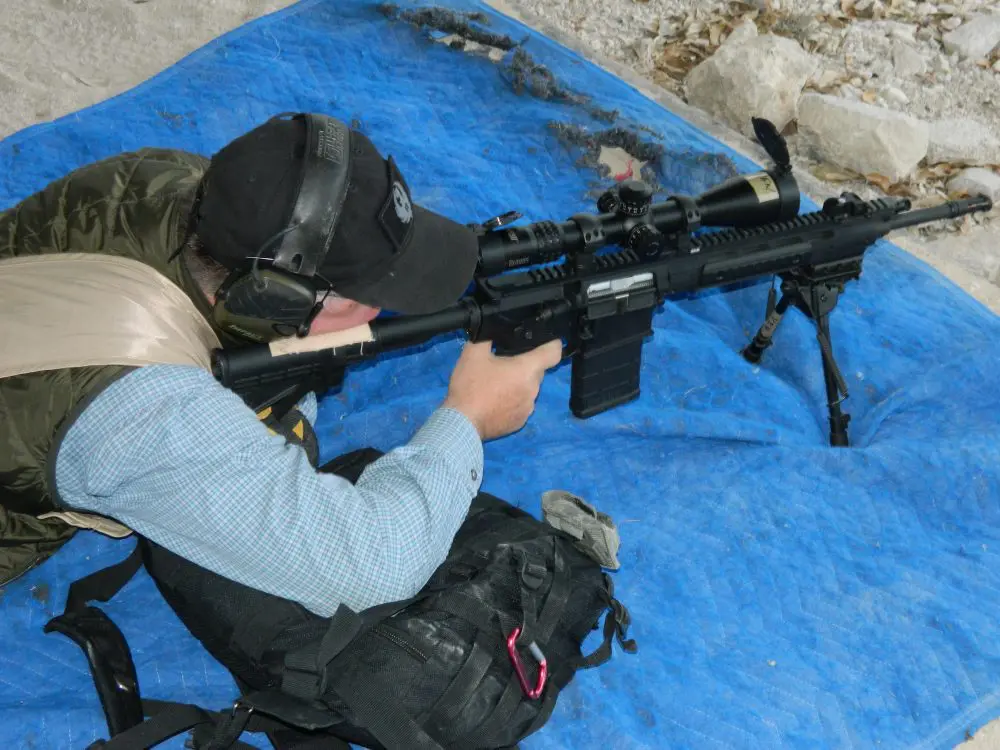Any time you use a hand-held weapon, the grip you take on that weapon is a major determining factor in how effectively you can use it. If you can’t hold a weapon well, you have little hope of employing it well.
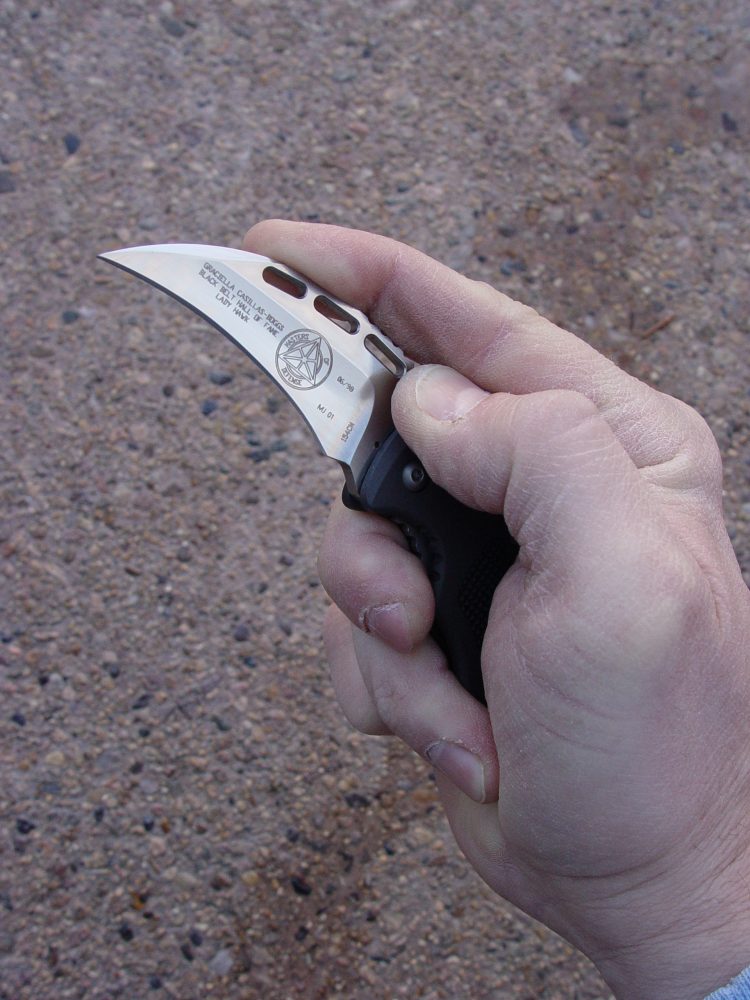
Over the years, much has been written about knife fighting grips and their significance to both the offensive and defensive use of the knife. While books and articles can provide good background knowledge, ultimately a good combative knife grip means a functional combative knife grip. And the best information I’ve found on this subject was obtained by watching talented knife players in action and experimenting with various grips in full-force training.
If we look beyond culture, tradition and martial politics, a good knife grip must accomplish three things: 1) it must allow you to hang onto your knife throughout the duration of the fight, 2) it must enable you to use the knife effectively as both a cutting and thrusting weapon, and 3) it must allow you to count to five on the fingers of your knife hand when the fight is over.
Criteria 1 and 2 are pretty much self-explanatory. Criterion number 3 means that a good knife grip must enable you to manage the shock of full-force impact without suffering damage to your own hand. For example, if you thrust at an attacker’s abdomen, even though you are targeting soft tissue, the possibility of hitting something hard like his sternum or belt buckle still exists. And if this happens, the force of your thrust, as well as the force of his forward momentum, will converge on the grip that you have on your knife. If the grip isn’t strong, the odds of you either dropping your knife or damaging your own hand are pretty high.
When considering knife grip—or any weapon grip—it is important to understand how the muscles of the forearm provide strength and dexterity to the hand. The strongest muscles of the forearm are the ones that power the middle, ring and little fingers. The index finger and thumb rely on different muscles that are designed primarily for dexterity. This combination is what allows you to grip a handgun firmly, yet still have independent trigger control.
With these criteria in mind, let’s take a look at the different types of knife grips. Note that all descriptions are based on a right-handed grip.
Hammer grip is the favorite of many military combatives enthusiasts. It is an extremely strong grip, but does not offer the instinctive edge orientation of some other grip styles. Here it is demonstrated with the Crucible folding knife designed by close-combat expert J. Kelly McCann.
Table of Contents
THE HAMMER GRIP
This term was coined by the late Col. Rex Applegate in his classic work Kill or Get Killed. To assume this grip, simply make a fist around the handle of the knife with the blade extending from the thumb side of the hand. Curl the thumb down and squeeze the hand tight.
The hammer grip is a very strong grip that is great for weapon retention and management of impact shock, and many knife practitioners use it exclusively. However, its focus on strength can sometimes compromise speed and maneuverability. As such, it is best suited for use with heavy-bladed knives suited for chopping and hacking tactics, or as a momentary convulsive grip at the moment of impact. The hammer grip is also sometimes used for “reverse-edge” tactics in which the cutting edge faces up or back toward the user.
THE SABER GRIP
The saber grip is so named because it resembles the traditional grip taken on a fencing saber. With the plane of the blade held vertically, the fingers are curled around the handle and the thumb is pressed against the upper quillon of the crossguard, or the forward area of the knife handle. The wrist is also turned downward to aim the point of the knife at the opponent.
This grip provides much better maneuverability than the hammer grip, but is not nearly as secure. During strong thrusts, the thumb often impacts painfully against the guard and the hand slides forward on the handle. If no guard or finger grooves are present, the hand may slide onto the blade itself. The canted wrist position also makes wrist sprains possible during powerful thrusts.
The saber grip is best suited for large knives with crossguards that actually handle like a saber (e.g., Bowies). To protect the thumb from impact, it can be held slightly away from the guard or to the left side of it. This latter position is sometimes called the quarter-saber grip.
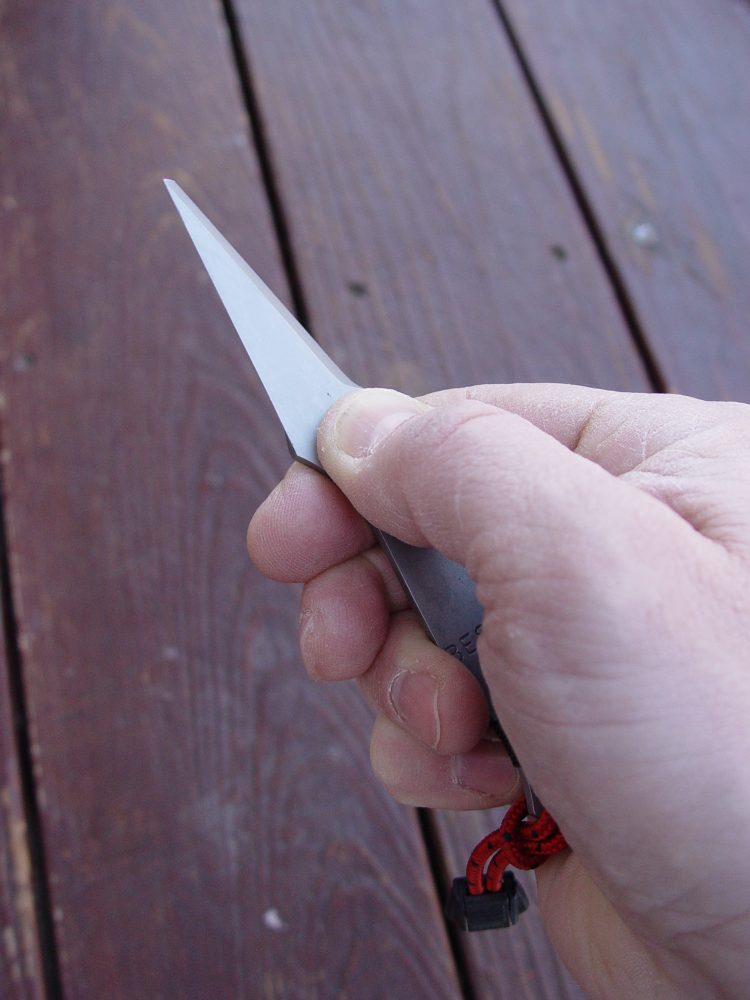
THE FOIL GRIP
The foil grip came to us from fencing. It is very similar to the saber grip, except that the plane of the blade is held horizontally with the edge to the left. In this position, the thumb rides on the left side of the handle.
This grip provides excellent speed and mobility for inward and downward slashes, but is less functional for backhand cutting and thrusting. It is best suited for short-handled, double-edged knives and other small knives like neck knives that do not offer enough handle area for other grip styles.
THE FILIPINO GRIP
This is a term that I coined after years of observing skilled practitioners of the Filipino martial arts in action. I later learned that this grip is also very similar to the traditional grip of Japanese tantojutsu knife fighting.
To assume this grip, lay the handle of the knife across your palm at the base of your fingers. Curl the little, ring, and middle fingers tightly around the lower portion of the handle and make this tension the focus of your grip. Extend your thumb straight along the back of the blade (or top of the guard if the knife is so equipped) and gently curl your index finger in to complete the grip.
The Filipino grip offers several unique advantages over other knife grips. First, by gripping the handle of the knife with the last three fingers, you anchor it securely to the base of the palm—the portion of the hand best suited to absorbing impact shock. At the same time, by not forcefully contracting the index finger, you maintain wrist flexibility for maximum mobility and speed. Also, if your hand should slide forward during a powerful thrust, the combination of the firm three-finger grip and the light grip of the index finger will keep the index finger off the blade edge and reduce the chances of injury.
Another advantage of this grip is that the position of the thumb allows it to be used as a natural, almost instinctive guide for the blade. Since the thumb is highly coordinated, it is possible to use its existing muscle memory to guide the blade accurately to the target. To cut, you simply concentrate on touching the target with the ball of your thumb. To thrust, think about touching the target with the tip of your thumb.
Filipino grip places the thumb on the back of the blade, using the ball of the thumb to index the blade edge.
There are two common variations of the Filipino grip. The first has the thumb extended a couple of inches above and parallel to the back of the blade. This grip is used to trap and control an opponent by catching his limb or his weapon between the thumb and the back of the blade.
A second variation has both the thumb and index finger extended and the entire focus of the grip on the last three fingers of the hand. This provides an excellent index for thrusting, since the blade bisects the angle of the thumb and fingers. Just reach for the target as if grasping it, and your thrust will be on target.
Both of these variations do compromise the strength of your grip and are not recommended as primary fighting grips.
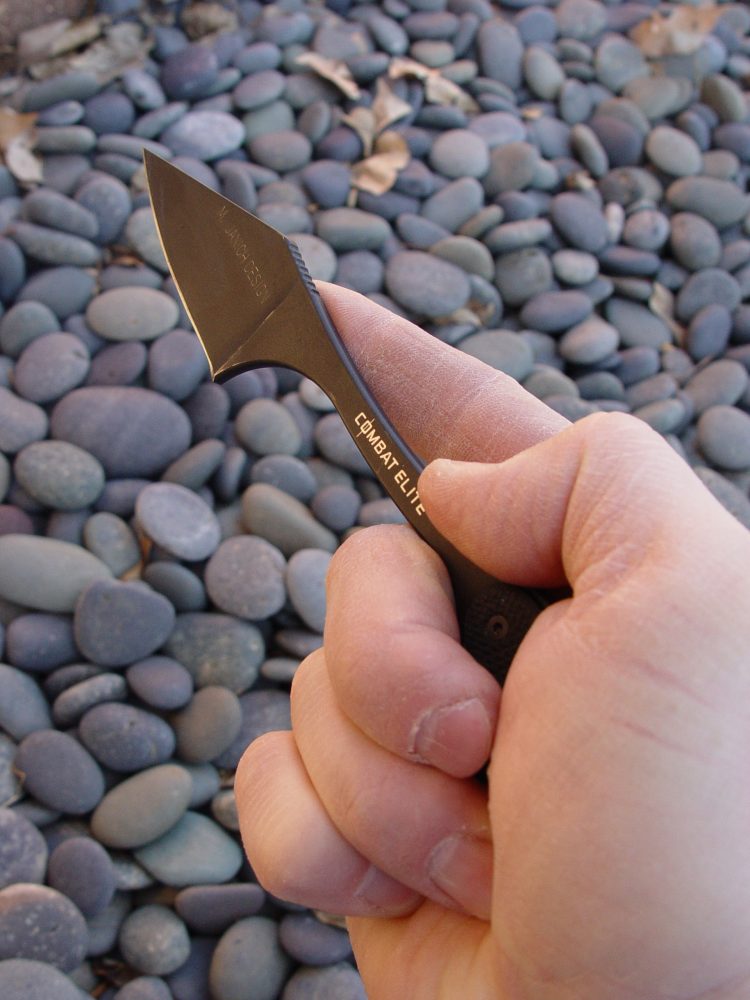
THE INDEX FINGER/PISTOL GRIP
This grip is often seen in the Indonesian martial arts because of their preference for the kris and similar pistol grip-style knives. To assume this grip, place the butt of the handle against the base of the palm and curl the thumb and last three fingers of the hand around the handle to anchor it in place. Extend the index finger along the handle and the flat of the blade so it points right down the centerline of the blade.
Like the thumb in the Filipino grip, the index finger provides an excellent index. Just think of touching the target with your fingertip, and your thrust will be right on the mark. For cutting and weapon retention, however, this grip leaves something to be desired.
THE CLAW GRIP
Sometimes also called a “scalpel” grip, this grip is particularly suited to hawkbill knives and very short blades. The handle of the knife is again held against the palm with the last three fingers of the hand, but the index finger is placed right on the back of the blade. This transforms the blade into a lethal talon that can be used almost instinctively for slashing and clawing movements. Unfortunately, this grip is poorly suited to thrusting and offers marginal weapon retention potential.
THE REVERSE OR “ICE PICK” GRIP
This grip can be assumed exactly like the hammer or Filipino grips, with the exception that the blade extends from the little-finger side of the hand. Although the hammer grip-style is stronger, the Filipino grip is more flexible and provides a better index. By “capping” the butt of the handle with the extended thumb, you can virtually eliminate the possibility of the hand sliding onto the blade during impact.
The reverse grip does not work well at long range because it requires excessive wrist movement to cut effectively. At close range, however, it allows powerful upward cuts and devastating backhand and downward thrusts. It also enables the user to employ a variety of unique hooking, trapping and redirecting tactics. The reverse grip can also be used with reverse-edge tactics in which the cutting edge faces back toward the ulnar side of the user’s forearm. With this grip, the knife user “baits” his opponent’s block with a thrust, then pulls back forcefully to cut the arm and clear a path for another thrusting attack.
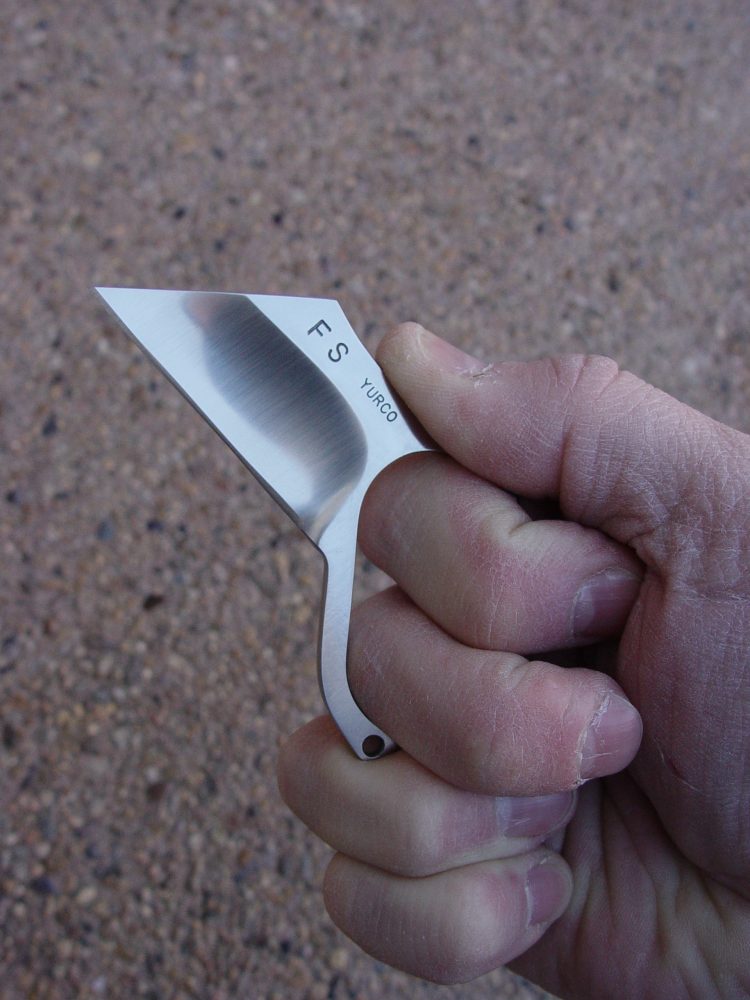
SPECIALTY GRIPS
This category includes any grip style that is specific to a unique or unusual handle design. Some of the most common examples of this would include the extended index finger grip used with the Indonesian karambit knife and the two-finger grip required with the Hidden Edge knife. Although it is possible to cut effectively with these grips, the fact that they anchor the knife handle to the fingers rather than the palm and transfer the force of impact to a very concentrated surface area limits the force with which you can cut. Very powerful cuts with these knife grips could potentially bruise or even break your fingers, so I regard them as “light duty” combat grips at best.
Like the debate between Weaver and Isosceles shooting stances, knife grip is a matter of personal choice and function. Ultimately, your choice of grip will depend upon your hand size, your choice of knife and your tactical needs. To find out which grips work best for you, get some realistic training knives and do some full-power cutting impact on resilient training targets. Then carefully do the same with live blades.
Since it’s your life on the line, it should also be your choice. If the grip you choose works for you, it works.
[Michael Janich is a noted edged weapons instructor and author of numerous books and instructional videos. A decorated U.S. Army veteran and former DIA intelligence officer, Janich has also designed knives for Masters of Defense, Spyderco, Combat Elite, BlackHawk Blades and numerous custom knifemakers. For more information, please consult his website, www.martialbladeconcepts.com.]
